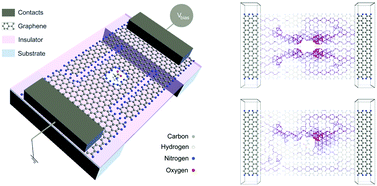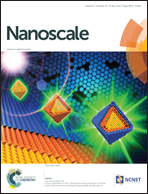Tuneable graphene nanopores for single biomolecule detection
Abstract
Solid-state nanopores are promising candidates for next generation DNA and protein sequencing. However, once fabricated, such devices lack tuneability, which greatly restricts their biosensing capabilities. Here we propose a new class of solid-state graphene-based nanopore devices that exhibit a unique capability of self-tuneability, which is used to control their conductance, tuning it to levels comparable to the changes caused by the translocation of a single biomolecule, and hence, enabling high detection sensitivities. Our presented quantum simulation results suggest that the smallest amino acid, glycine, when present in water and in an aqueous saline solution can be detected with high sensitivity, up to a 90% change in conductance. Our results also suggest that passivating the device with nitrogen, making it an n-type device, greatly enhances its sensitivity, and makes it highly sensitive to not only the translocation of a single biomolecule, but more interestingly to intramolecular electrostatics within the biomolecule. Sensitive detection of the carboxyl group within the glycine molecule, which carries a charge equivalent to a single electron, is achieved with a conductance change that reaches as high as 99% when present in an aqueous saline solution. The presented findings suggest that tuneable graphene nanopores, with their capability of probing intramolecular electrostatics, could pave the way towards a new generation of single biomolecule detection devices.

- This article is part of the themed collection: 2016 Nanoscale HOT Article Collection


 Please wait while we load your content...
Please wait while we load your content...